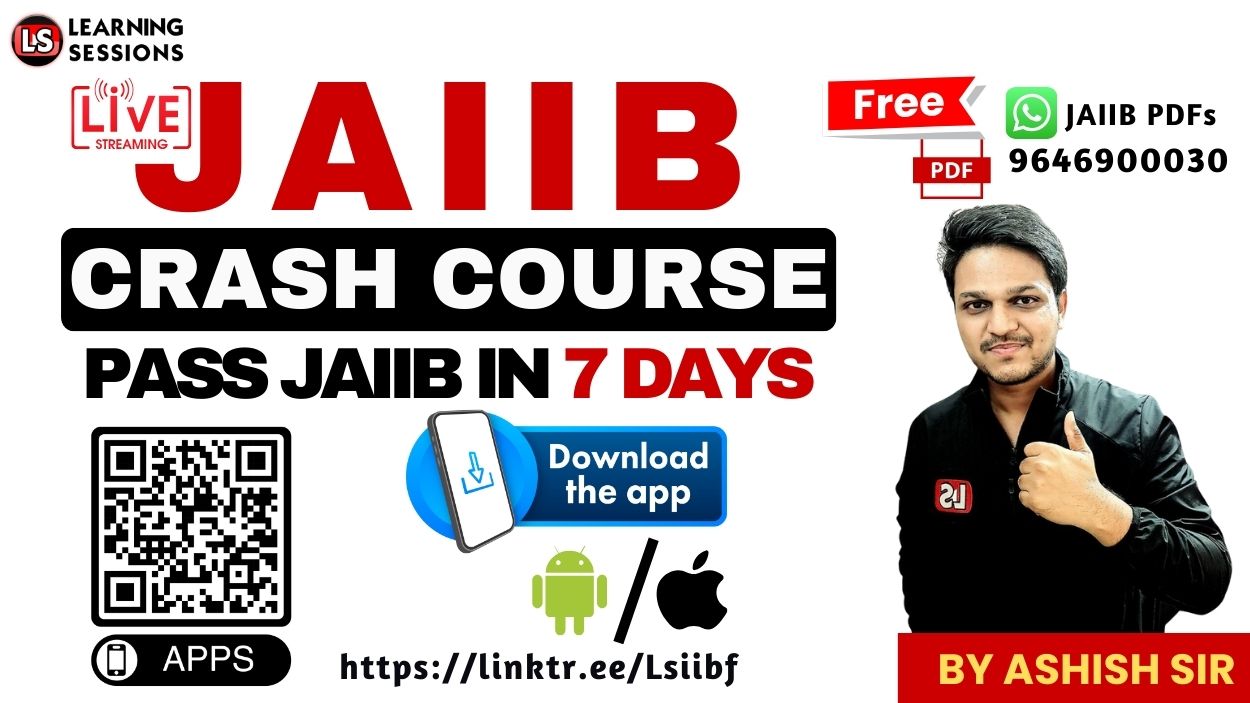Ever felt confused about banking laws like SARFAESI or struggled with calculating eligibility for home or vehicle loans? You’re not alone. Most bankers and JAIIB aspirants find Module B of RBWM quite challenging because it deals with real-time applications, legal frameworks, and retail products.
In this comprehensive blog post, we decode the most important concepts and real-life applications of RBWM Module B using practical examples and simplified explanations. You’ll explore topics like:
📚 JAIIB Study Resources 📚
👉 Check Here
👉 Check Here
👉 Check Here
👉 Get Tests Here
👉 Check Here
- The SARFAESI Act: Purpose, provisions, and practical enforcement
- Recovery mechanisms via DRT/DRAT: Timelines and appeals
- Complete home loan eligibility analysis
- Education loan norms: Security, margin, and moratorium
- Vehicle loan process with documentation and hypothecation
- Credit card usage, features, and interest-free periods
- Prepaid Payment Instruments (PPIs) and their types
👉 Watch the Full Session Here
Before diving deeper, make sure to watch the complete video session covering all these topics with live explanations and case studies:
SARFAESI Act Explained
The SARFAESI Act empowers banks and financial institutions to recover non-performing secured loans without approaching the court. It allows for seizure and sale of the mortgaged property. However, this act is applicable only for secured loans and specifically excludes agricultural land.
Under this act, banks can send a demand notice and, after 60 days without repayment or response, take possession of the asset and sell it to recover the dues. This bypasses lengthy court procedures and expedites recovery.
DRT and DRAT Provisions
Debt Recovery Tribunal (DRT) was established to fast-track the recovery of dues exceeding ₹20 lakhs. Borrowers have 60 days to respond to notices under SARFAESI, and 45 days to appeal to the DRT if they disagree with the creditor’s actions.
Appeals to the Debt Recovery Appellate Tribunal (DRAT) require a mandatory deposit of 50% of the debt amount, though this may be relaxed to 25% in exceptional cases. However, if the DRT’s decision is a result of mutual consent, no appeal is permitted.
Home Loan Case Study: Avinash’s Eligibility
Avinash, a 35-year-old salaried employee from Bengaluru earning ₹1.2 lakh/month, is purchasing a 2BHK flat worth ₹80 lakhs and seeks a loan of ₹64 lakhs. Here’s how banks will assess his eligibility:
- Margin: 20% (₹16 lakhs to be contributed by Avinash)
- Primary Security: The apartment itself
- Moratorium: 3 months for ready possession property
- Maximum Tenure: 30 years (subject to age criteria)
- Net Take Home Pay: Minimum 40% after all deductions
This ensures that even after EMI payments, the borrower has sufficient income left for daily needs.
Education Loan: Norms and Margins
Education loans are categorized based on the loan amount and whether the student is studying in India or abroad:
- Up to ₹4 lakhs: No collateral required; parents must be joint borrowers
- ₹4 to ₹7.5 lakhs: Requires a third-party guarantee
- Above ₹7.5 lakhs: Tangible collateral + future income assignment
- Margin: 5% for studies in India, 15% abroad
- Moratorium: Course duration + 1 year grace period
- Extension: Up to 2 years allowed in genuine cases
Vehicle Loan: Rajesh’s Case
Rajesh, a software engineer from Hyderabad, wants to buy a new car worth ₹8 lakhs. Here’s how the vehicle loan will be processed:
- Loan Eligibility: Based on income and CIBIL score
- Margin: 10% for new vehicles (i.e., ₹80,000 self-contribution)
- Security: Hypothecation of vehicle
- Tenure: Up to 7 years for new cars
- Moratorium: Not applicable; repayment starts immediately
Personal Loan Snapshot
Personal loans are unsecured and disbursed for multiple purposes like marriage, home renovation, emergency expenses, or consumer durable purchases. Here’s a quick look:
- Eligibility: Salaried individuals, pensioners, self-employed professionals
- Amount: Varies from bank to bank
- Repayment: 30–60 EMIs
- Security: Typically unsecured, but gold/LIC/NSC may be accepted
- Moratorium: Usually not offered
Credit Cards and Co-Branded Cards
Credit cards work on a pre-approved credit limit and offer a revolving line of credit. The key features include:
- Interest-free period: Up to 45 days
- Buy now, pay later: Core mechanism
- Repayment: Minimum due + full outstanding cycle
- Co-branded cards: Jointly launched with brands for exclusive offers
Understanding Prepaid Payment Instruments (PPI)
PPIs are preloaded wallets or cards used for purchases and sometimes withdrawals. Types include:
- Closed System: Can be used only at issuer’s outlet (e.g., Amazon Pay)
- Semi-Closed: Used at multiple outlets with issuer tie-ups
- Open System: Used for purchases and cash withdrawals; issued by banks only
Conclusion
This session has unlocked the toughest concepts of RBWM Module B. We navigated through laws like SARFAESI and DRT, dove deep into practical loan scenarios (home, education, vehicle), and unraveled modern products like credit cards and PPIs.
Implement this understanding into your daily banking role or JAIIB exam prep. These aren’t just facts; they’re the foundation of practical retail banking knowledge. Practice, revise, and stay updated!
If this blog helped you, share your views in the comments. Don’t forget to subscribe to our YouTube channel and share the content with fellow bankers.
📥 Download PDF Notes
Click below to get your FREE PDF including:
- All important MCQs with answers
- Case study summaries
- RBI guidelines tables
- Quick revision charts







